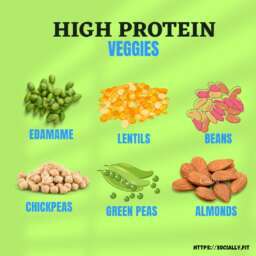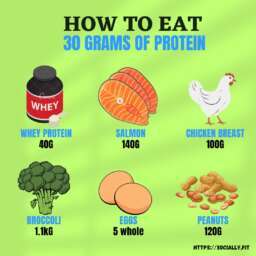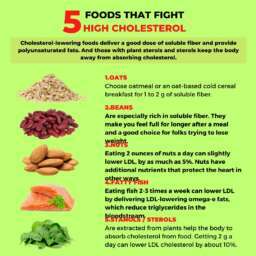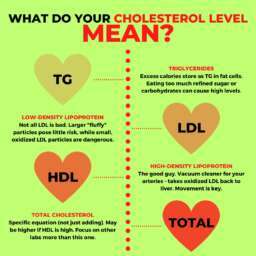Frosted Flakes Nutrition: Benefits, Concerns, and Tips for a Balanced Diet. Discover the nutritional value of frosted flakes, including their benefits and potential concerns. Learn how to incorporate them into a balanced diet for a healthier lifestyle.
Introduction
Frosted flakes, with their irresistible crunch and sweet flavor, have been a breakfast staple for many. But beyond their taste, understanding the nutritional value of frosted flakes is crucial for making informed dietary choices. In this article, we delve into the intricacies of frosted flakes nutrition, uncovering their benefits and potential drawbacks.
Frosted Flakes Nutrition
Nutritional Breakdown

Calories: A typical serving of frosted flakes contains around 150 calories.
Carbohydrates: Most of the calories in frosted flakes come from carbohydrates, providing energy for the body.
Protein: Frosted flakes contain a small amount of protein, which is essential for muscle repair and growth.
Fat: There is minimal fat in frosted flakes, making them a low-fat breakfast option.
Sugar: One of the main concerns with frosted flakes is their high sugar content, contributing to their sweet taste.
Vitamins: Frosted flakes are often fortified with vitamins such as vitamin D, which supports bone health, and B vitamins, which are important for energy metabolism.
Minerals: They may also contain minerals like iron and calcium, which are essential for various bodily functions.
Fiber: While frosted flakes are not typically high in fiber, some varieties may contain added fiber for digestive health.
Sodium: It’s important to check the sodium content of frosted flakes, as some varieties may be high in salt.
Other Additives: Depending on the brand, frosted flakes may contain additional additives such as preservatives or artificial flavors.
Frosted Flakes Nutrition
How does the sugar content of frosted flakes compare to that of other popular breakfast cereals?
| Breakfast Cereal | Sugar Content per Serving | Description |
|---|---|---|
| Frosted Flakes | 10-12 grams | Known for their sweet taste and crunchy texture. |
| Corn Flakes | 2-4 grams | Lightly sweetened and crispy cereal flakes. |
| Honey Nut Cheerios | 9 grams | Sweetened with honey and flavored with nuts. |
| Froot Loops | 12 grams | Colorful, fruit-flavored loops with added sugar. |
| Raisin Bran | 7-9 grams | Sweetened with raisins and bran flakes. |
| Cinnamon Toast Crunch | 9 grams | Flavored with cinnamon and sugar. |
| Special K | 2-4 grams | Low-sugar cereal with a variety of flavors. |
Analysis and Tips:
- Moderation is Key: While frosted flakes and some other cereals may be higher in sugar, they can still be enjoyed as part of a balanced diet when consumed in moderation.
- Check Serving Sizes: Pay attention to serving sizes, as the sugar content listed is typically per serving. Adjust portions accordingly to manage sugar intake.
- Consider Alternatives: If reducing sugar intake is a concern, consider opting for cereals with lower sugar content or unsweetened varieties.
- Read Labels: Always read the nutrition labels on cereal boxes to make informed choices about sugar content and other nutritional factors.
- Balance with Other Foods: Pair sugary cereals like frosted flakes with protein-rich foods like yogurt or nuts to help balance blood sugar levels and promote satiety.
- Homemade Options: Experiment with homemade cereal recipes using whole grains, nuts, seeds, and natural sweeteners like honey or maple syrup to control sugar content.
Frosted Flakes Nutrition
Health Benefits of Frosted Flakes

- Convenience: Frosted flakes are a quick and easy breakfast option, making them ideal for busy mornings when time is limited.
- Fortified with Nutrients: Many brands of frosted flakes are fortified with essential vitamins and minerals, such as vitamin D, calcium, and iron, which contribute to overall nutritional intake.
- Energy Source: The carbohydrates in frosted flakes provide a quick source of energy, making them suitable for fueling morning activities.
- Palatability: The sweet taste and crunchy texture of frosted flakes can make them more appealing to picky eaters, encouraging breakfast consumption.
- Versatility: Frosted flakes can be enjoyed in various ways, such as with milk, yogurt, or as a topping for smoothie bowls, offering versatility in meal options.
- Portion Control: Most frosted flake cereals come in pre-portioned servings, aiding in portion control and preventing overeating.
- Mood Boost: Enjoying a bowl of frosted flakes can provide a sense of comfort and satisfaction, potentially boosting mood and reducing stress levels.
- Digestive Health: While not high in fiber themselves, frosted flakes can be paired with fiber-rich foods like fruits or nuts to support digestive health.
- Weight Management: When part of a balanced diet, frosted flakes can contribute to weight management by providing a satisfying breakfast option that helps prevent overeating later in the day.
- Child-Friendly: Frosted flakes are often enjoyed by children, providing a convenient and tasty breakfast option that can help ensure they start the day with essential nutrients.
Frosted Flakes Nutrition
In terms of calories per serving, how do frosted flakes stack up against traditional oatmeal?
| Breakfast Cereal | Calories per Serving | Description |
|---|---|---|
| Frosted Flakes | 150 | Sweetened cornflakes with a crunchy texture. |
| Oatmeal | 150 | Whole-grain oats cooked with water or milk, offering fiber. |
Analysis and Tips:
- Calorie Equivalency: Despite their different textures and flavors, both frosted flakes and oatmeal offer around the same number of calories per serving.
- Nutrient Density: While both options provide the same amount of calories, oatmeal tends to be more nutrient-dense, offering fiber, vitamins, and minerals that contribute to overall health.
- Satiety Levels: Oatmeal’s higher fiber content may promote feelings of fullness and satiety compared to frosted flakes, which are higher in sugar and lower in fiber.
- Customization: Oatmeal offers more opportunities for customization with toppings like fruit, nuts, and seeds, allowing for a wider variety of flavors and textures.
- Long-Term Health: Opting for oatmeal over frosted flakes may contribute to long-term health benefits, including improved heart health, better digestion, and stable blood sugar levels.
- Consider Portions: While both options provide the same number of calories per serving, be mindful of portion sizes to avoid overconsumption, especially with sweetened cereals like frosted flakes.
- Meal Timing: Consider the timing of your meals and choose accordingly. Oatmeal may be a better option for a sustained energy release throughout the morning, while frosted flakes may provide a quick energy boost but could lead to a sugar crash later on.
- Dietary Preferences: Depending on personal taste preferences and dietary restrictions, individuals may choose one option over the other. Experiment with both to find what works best for you.
Frosted Flakes Nutrition
List 25 Potential Concerns
- High sugar content contributing to increased risk of dental cavities.
- Excessive sugar intake leading to weight gain and obesity.
- Blood sugar spikes and crashes due to rapid sugar absorption.
- Risk of insulin resistance and type 2 diabetes with frequent consumption.
- Lack of fiber leading to digestive issues such as constipation.
- Overreliance on processed foods like frosted flakes compromising overall diet quality.
- Potential for nutrient deficiencies if frosted flakes replace more nutritious foods.
- Consumption of artificial colors and flavors in some frosted flake varieties.
- Additives like preservatives and stabilizers used in manufacturing processes.
- Allergen concerns for individuals with sensitivities to wheat or gluten.
- High glycemic index of frosted flakes affecting blood sugar levels.
- Impact on mood and energy levels due to sugar crashes.
- Potential for hyperactivity and behavioral issues in children due to sugar content.
- Difficulty in portion control leading to overeating.
- Risk of cardiovascular disease associated with high sugar intake.
- Lack of satiety leading to increased snacking and calorie consumption.
- Displacement of nutrient-rich breakfast options like whole grains and protein sources.
- Environmental impact of manufacturing and packaging processes.
- Economic cost of purchasing processed breakfast cereals regularly.
- Potential for food addiction due to the addictive nature of sugar.
- Negative impact on cognitive function and concentration, especially in children.
- Influence on taste preferences, making healthier foods less appealing.
- Ethical concerns related to labor practices and sourcing of ingredients.
- Marketing tactics targeting children and promoting unhealthy eating habits.
- Lack of long-term studies on the health effects of regular frosted flakes consumption.
Frosted Flakes Nutrition
How to Incorporate Frosted Flakes Into Your Diet?

- Classic Breakfast Bowl: Start your day with a traditional bowl of frosted flakes served with cold milk. This classic combination offers a sweet and crunchy breakfast option that’s quick to prepare. To enhance the nutritional value, consider adding sliced bananas, berries, or chopped nuts on top for added flavor, texture, and nutrients. This simple yet satisfying breakfast will keep you energized and satisfied until your next meal.
- Yogurt Parfait: Create a delicious yogurt parfait by layering frosted flakes with creamy yogurt and fresh fruit. Simply alternate layers of frosted flakes with yogurt in a glass or bowl, adding your favorite fruits such as strawberries, blueberries, or peaches between each layer. The combination of crunchy frosted flakes, creamy yogurt, and juicy fruit creates a delightful balance of flavors and textures. This parfait makes for a nutritious breakfast or snack option that’s both satisfying and enjoyable.
- Trail Mix: Mix frosted flakes with nuts, seeds, and dried fruit to create a homemade trail mix that’s perfect for snacking on the go. Combine frosted flakes with almonds, pumpkin seeds, and dried cranberries in a portable container for a sweet and crunchy snack that provides a quick energy boost. This trail mix is not only delicious but also provides a mix of carbohydrates, protein, and healthy fats, making it a satisfying option for fueling your day.
Frosted Flakes Nutrition
Are frosted flakes a better source of essential vitamins and minerals compared to granola?
| Nutrient | Frosted Flakes | Granola | Description |
|---|---|---|---|
| Vitamin D | Fortified | Minimal | Frosted flakes are often fortified with vitamin D, which supports bone health. |
| Calcium | Fortified | Varies | Some varieties of granola may contain calcium-rich ingredients like nuts. |
| Iron | Fortified | Varies | Iron content in granola depends on ingredients like oats, nuts, and seeds. |
| Vitamin B12 | Fortified | Minimal | Frosted flakes may be fortified with vitamin B12, important for energy metabolism. |
| Fiber | Minimal | High | Granola typically contains more fiber from ingredients like oats and seeds. |
| Protein | Minimal | Moderate | Granola often contains protein from nuts and seeds, providing satiety. |
| Potassium | Minimal | Varies | Some granola varieties may contain potassium-rich ingredients like nuts and seeds. |
Analysis and Tips:
- Fortification: Frosted flakes are often fortified with essential vitamins and minerals like vitamin D and vitamin B12, making them a good source of these nutrients compared to unfortified granola.
- Calcium Content: While frosted flakes may contain fortified calcium, granola can also be a good source of this mineral, particularly if it contains calcium-rich ingredients like nuts or seeds.
- Iron Levels: The iron content in granola can vary depending on the ingredients used, potentially providing a higher source of this nutrient compared to frosted flakes.
- Fiber and Protein: Granola tends to be higher in fiber and protein compared to frosted flakes, thanks to ingredients like oats, nuts, and seeds. This can contribute to better satiety and digestive health.
- Consider Overall Nutrition: When choosing between frosted flakes and granola, consider the overall nutritional profile, including sugar content, fiber, and protein, to make the best choice for your dietary needs and preferences.
- Portion Control: Regardless of the choice, practice portion control to avoid overconsumption of calories and sugar, especially with sweetened cereals like frosted flakes.
- Dietary Preferences: Choose based on personal taste preferences and dietary goals, whether it’s boosting specific nutrients like fiber and protein or minimizing sugar intake.
Frosted Flakes Nutrition
Conclusion
In conclusion, while frosted flakes can be a convenient and enjoyable breakfast option, it’s essential to consider their nutritional value and potential impact on overall health. While they provide quick energy and are fortified with essential vitamins and minerals, they are also often high in sugar and low in fiber. Moderation is key when incorporating frosted flakes into your diet, as excessive consumption may lead to health issues such as weight gain, dental problems, and blood sugar imbalances.
Additionally, it’s crucial to balance frosted flakes with other nutrient-rich foods to ensure a well-rounded diet. Pairing them with protein-rich foods like yogurt or adding fresh fruit can enhance their nutritional value and provide a more balanced meal. Choosing whole grain cereals like oatmeal or granola may offer a higher fiber content and fewer added sugars, making them a healthier alternative for some individuals.
Ultimately, the decision to include frosted flakes in your diet should be based on personal dietary preferences, nutritional needs, and lifestyle factors. By being mindful of portion sizes, opting for fortified varieties, and incorporating them into a balanced diet, you can enjoy frosted flakes as part of a healthy lifestyle while minimizing potential risks to your health.
Frosted Flakes Nutrition
FAQs
1. Are frosted flakes suitable for a healthy diet?
Yes, frosted flakes can be part of a balanced diet when consumed in moderation and accompanied by other nutritious foods.
2. How can I reduce the sugar content of frosted flakes?
Consider mixing frosted flakes with unsweetened cereal or adding fresh fruit for natural sweetness without additional sugar.
3. Are there any alternatives to frosted flakes with lower sugar content?
Yes, there are several low-sugar or sugar-free cereal options available on the market that provide a similar crunch without the excessive sweetness.
4. Can frosted flakes be eaten as a snack?
While frosted flakes are primarily marketed as a breakfast cereal, they can also be enjoyed as a snack when paired with other ingredients like nuts or dried fruit.
5. Are frosted flakes suitable for children?
Frosted flakes can be part of a child’s diet when consumed occasionally and in appropriate portion sizes. However, it’s essential to monitor sugar intake and encourage a variety of nutritious foods.















2 thoughts on “Frosted Flakes Nutrition”